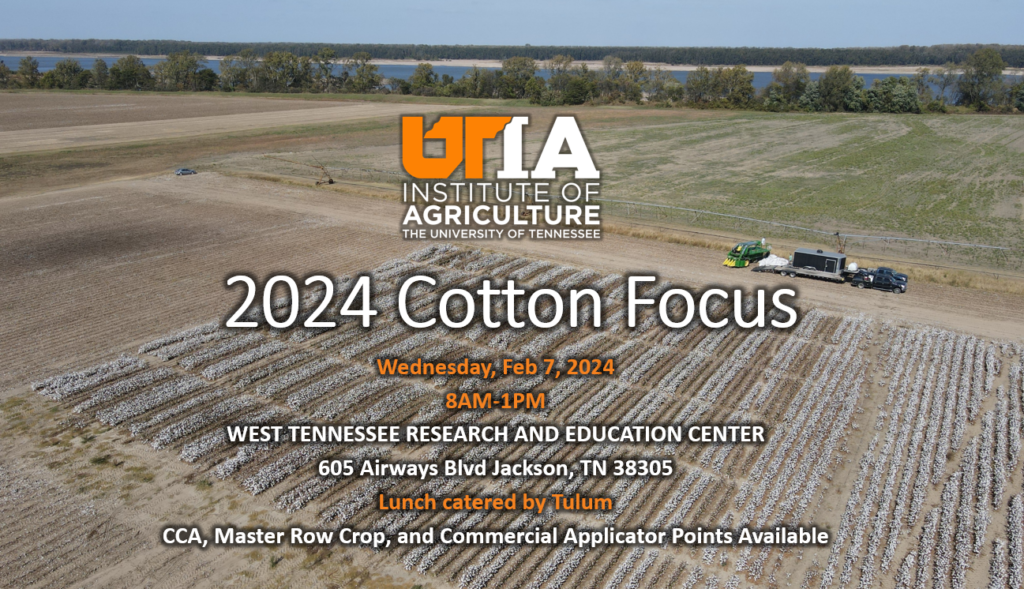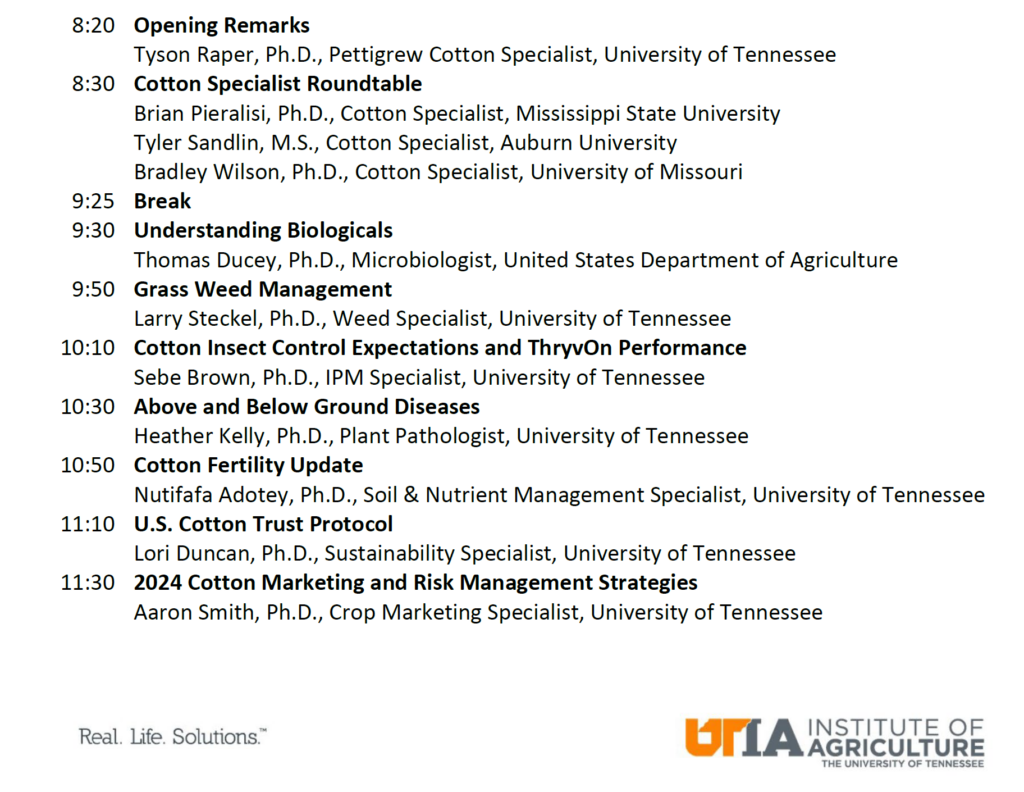Come join us in Memphis at the Trade Conference, hosted by the Mid-South Farm & Gin Show
Come join us in Memphis at the Trade Conference, hosted by the Mid-South Farm & Gin Show
Ready to learn something while driving down the road or riding the tractor? Try out one of these podcasts … Continue reading
The upcoming webinar, “Scabinar”, on March 13, is from 10:00 AM to 12:00 PM central time. This year’s Scabinar will focus primarily on fungicides for management of FHB Continue reading
 Most of the commercial and state soil testing laboratories in and around Tennessee use and prescribe fertilizer recommendations based on Mehlich 3 soil test extraction method. Most growers may receive soil test results from laboratories that utilizes Mehlich 3 soil test extraction method. However, The University of Tennessee gives fertilizer recommendations based on the Mehlich 1 extractant. This makes it difficult for growers to take advantage of The University of Tennessee fertilizer recommendations. Currently, the Mehlich 1 and 3 conversion equations used in TN were derived from the University of Kentucky, which were based on Kentucky soils (Table 1). Continue reading
Most of the commercial and state soil testing laboratories in and around Tennessee use and prescribe fertilizer recommendations based on Mehlich 3 soil test extraction method. Most growers may receive soil test results from laboratories that utilizes Mehlich 3 soil test extraction method. However, The University of Tennessee gives fertilizer recommendations based on the Mehlich 1 extractant. This makes it difficult for growers to take advantage of The University of Tennessee fertilizer recommendations. Currently, the Mehlich 1 and 3 conversion equations used in TN were derived from the University of Kentucky, which were based on Kentucky soils (Table 1). Continue reading
Thanks to all the agents and producers who entered the 2023 TN Top Soybean Yield Contest sponsored by Tennessee Soybean Promotion Board. There were over 50 producers across TN who participated in the 2023 contest. See the winners below!
For more information, please contact your local County Extension office. Notice of Intent for the 2024 Yield Contest are due in early September.
Complete contest rules and forms are available at your County Extension Office

The 2024 Cotton Focus Event is TODAY, Wednesday, Feb. 7th starting at 8AM. We have a great lineup of speakers. CCA, Master Row Crop, and Commercial Applicator Points will be available. Lunch will be provided by Tulum. Please find a copy of the agenda below. Look forward to seeing you there! 
 I am happy to report the agenda for the 2024 Cotton Focus has been set and we have a very informative lineup. We will start the morning out with a Cotton Specialist Roundtable with Dr. Brian Pieralisi (MS), Mr. Tyler Sandlin (AL), and Dr. Bradley Wilson (MO) discussing their season observations, tips for 2024, and things they will be watching over the coming year. Next, we will have Dr. Thomas Ducey with USDA from Florence, SC discussing the emerging field of Biologicals- you will not want to miss his section! Our late morning section will include the always valuable updates from Dr. Lori Duncan, Dr. Aaron Smith, Dr. Sebe Brown, Dr. Larry Steckel, Dr. Nutifafa Adotey and Dr. Heather Kelly. Finally, we will close out the meeting with a catered lunch from Tulum. Pesticide and CCA points will be available. Looking forward to seeing each of you there!
I am happy to report the agenda for the 2024 Cotton Focus has been set and we have a very informative lineup. We will start the morning out with a Cotton Specialist Roundtable with Dr. Brian Pieralisi (MS), Mr. Tyler Sandlin (AL), and Dr. Bradley Wilson (MO) discussing their season observations, tips for 2024, and things they will be watching over the coming year. Next, we will have Dr. Thomas Ducey with USDA from Florence, SC discussing the emerging field of Biologicals- you will not want to miss his section! Our late morning section will include the always valuable updates from Dr. Lori Duncan, Dr. Aaron Smith, Dr. Sebe Brown, Dr. Larry Steckel, Dr. Nutifafa Adotey and Dr. Heather Kelly. Finally, we will close out the meeting with a catered lunch from Tulum. Pesticide and CCA points will be available. Looking forward to seeing each of you there!